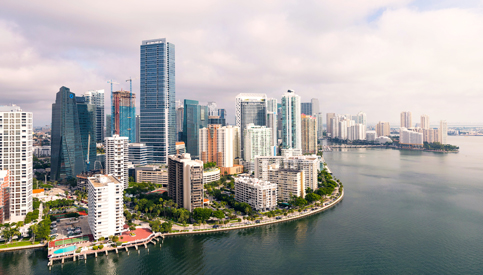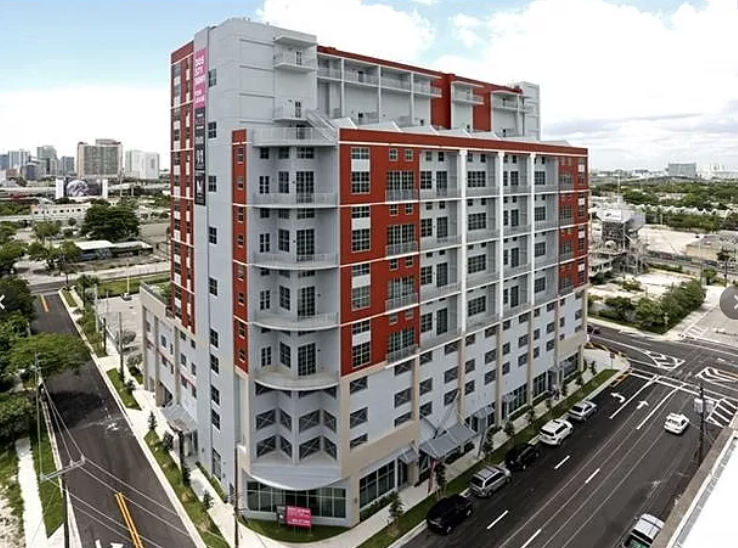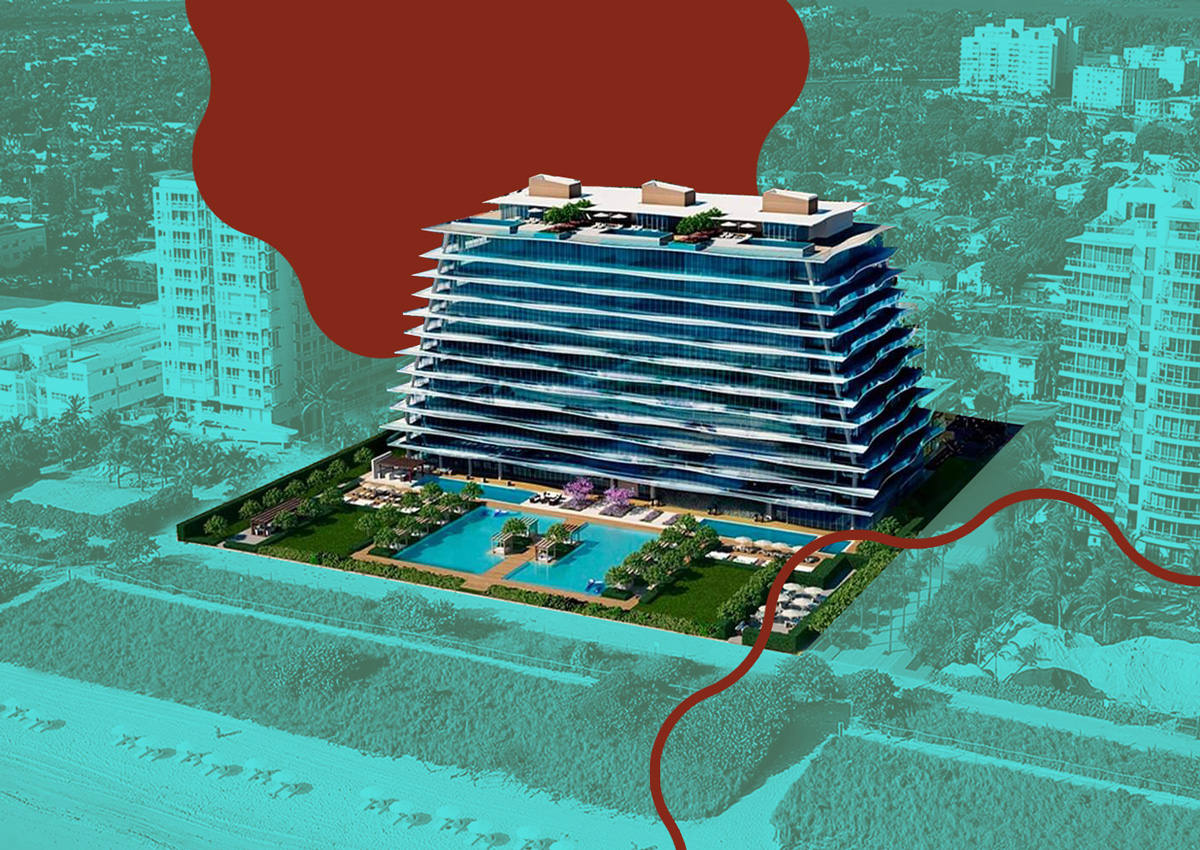Tight inventory, high interest squeeze home sales

Advertisement

Miami-Dade County’s hot residential market prices continue to rise as inventory trends downward.
“Our inventory is down 2.8% from a year ago, and sales are down 15.7%,” said Ron Shuffield, president and CEO of Berkshire Hathaway HomeServices EWM Realty, who has been in the field for 40 years.
The current supply of condominiums would last 7.4 months at the present sales pace, with 7,927 condos on the market, and the median price is $410,000, said Mr. Shuffield.
“Today we have 3,984 homes on the market, which is 64% of the 6,220 homes we had on the market just before the pandemic and … beginning of 2020. That’s four years ago now, almost, and sales are down 15.7%,” said Mr. Shuffield. “The reason that sales are not higher is because we don’t have enough inventory. There are people that would like to buy but we just don’t have homes to sell them.”
As a result of inventory being low, prices trend upward. The healthy amount of inventory is six to nine months, said Mr. Shuffield.
“Now we’re down to like four months of supply,” said Mr. Shuffield. “When the market drops below six months of supply, prices continue to increase.
Our median price of a home today is $600,000 in Dade County … and if you look back to the 2008 period the median price was $235,000.”
High interest rates are also affecting the residential market in Miami-Dade.
“Two years ago, interest rates were 3% and today they’re in the 7% range,” said Mr. Shuffield. “We’ve had more than doubling of the interest rate and, of course, what that means is people can only afford whatever they can afford with a 3% mortgage and the interest rate goes to 7%-7.5%, then they can only borrow about 60% of what they could have borrowed before.”
The interest rate along with the lack of inventory have impacted home buyers simultaneously.
“That [high interest rate] obviously has had an impact on how much our buyers can afford,” said Mr. Shuffield. “But what has kept prices high is the fact that we have such a limited amount of inventory. So if you only have a few homes for sale versus a lot of homes for sale, people have to pay more because you have more bidders for fewer properties for sale.”
The lack of inventory has been acknowledged by other professionals in the field as have the high interest rates and strong migration.
“Generally, we’re seeing a market of continued stability and strength,” said Jay Phillip Parker, CEO of brokerage at Douglas Elliman. “We’re continuing to see strong migration and strong relocation trends from both domestic buyers and international buyers across the nation. We’re recognizing approximately 3% of home buyers, which is an enormous number, are continuing to search to move to Miami from other metros. The strength of those markets are continuing to come from New York, Boston, DC, Chicago, Los Angeles, and then the rest of the nation.”
As more businesses move to Miami, more homes are being bought. This creates a domino effect as the number of residents increase.
“Our corporate growth has really excelled since covid,” said Mr. Shuffield. “Many new companies are moving here … and with these companies, of course, come new jobs and those people are permanent residents moving here with families, in many cases, entering schools. We like that, but we also like second homeowners, vacation owners because they also bring a lot of value to all of our businesses.”
Professionals have noticed an increase in primary residence buyers, but that is not to say the number of secondary home buyers has decreased.
“I don’t think we have less secondary home buyers, I think we just have more buyers period, and certainly more primary residents because … we had a huge influx of people during covid that were looking for a more open environment to live in and they thought they would be going back to wherever they came from,” said Alicia Cervera Lamadrid, managing partner, principal at Cervera Real Estate. “A lot of them came from New York, etc.”
“And what they found,” she said, “is that they really liked the quality of life in Miami. Beyond covid they discovered that the people were nice, the schools were good, the business opportunities were phenomenal, the airport is terrific, etc. So they decided to make it a permanent residence. But it doesn’t mean that the second homebuyers have diminished, it just means that the primary residents have increased.”
An interest in larger formatted condominiums, more expensive units in buildings being bought at a quicker rate than usual and unit combinations is noted by Mr. Parker.
“We’re finding a significant amount of requests for unit combinations,” said Mr. Parker. “And so a developer in their caution is usually developing two bedrooms, three bedrooms, four bedrooms, to allow for there to be optionality, velocity and sales. In many of our luxury products we’re finding people looking to combine perhaps a two-bedroom and a three-bedroom looking for more space to incorporate their needs.”
Mike Pappas, CEO of the Keyes Company, who has been there for 43 years, noted a cycle in the real estate market.
“Historically, we have about a 10-year real estate cycle and they start at the bottom, usually through a crash or crisis, and then they build a base and a foundation of renters moving into first-time homebuyers, and then the first-time homebuyers moving up to second-time homebuyers, and when there’s a feeding frenzy on the luxury, it’s usually the end of the run,” said Mr. Pappas. “If you look back historically, if you assume that 2008 to 2011 was the bottom of the last one and the 2021 was the peak of that cycle, we’ve been readjusting a new foundation, finding the bottom of 2022 and 2023.”
“I am bullish,” he said, “that we’re in the bottom of the market and that there are signs of improvement for next year. That will start building a new base for the future and realistically have a strong run for the next five to eight years, unless there’s an outside crisis that stops it.
“We had a 1974 downturn, we had a 1981 downturn, we had a 1992 downturn and we had a 2008 downturn, and now in a sense, a 2022-2023 downturn … looking at the history of South Florida, this is the pattern that we’ve seen, and we think we’re at the bottom or through the worst.”
Professionals also cite buyers’ interest in different parts of Florida.
“There has been an expansion in the scope of a prospective buyer’s relocation to Florida, where historically … someone from New York would look to Florida, it was basically Miami Beach and nowhere else,” said Mr. Parker. “Today, buyers are looking at all of the markets: Miami Beach, Miami, Edgewater, Surfside, Bal Harbour, Bay Harbor, Coral Gables, Coconut Grove, but also interestingly, people are exploring West Palm Beach, Fort Lauderdale, Jupiter. Most notably, what has been a traditionally Midwestern market on the West Coast of Florida, that market has now expanded to capture the interest of buyers coming from the Northeast as well as the Midwest and the West Coast of the United States.”
The real estate market continues to fluctuate year after year as factors such as interest rates and inventory trends impact different aspects of the market.
“Miami is a city that’s very much on the upswing, so if people are here and they’re thinking that they want to live here, I would tell them not to wait,” said Ms. Cervera Lamadrid. “I think that the right time to buy in Miami is when you’re ready to buy.”


